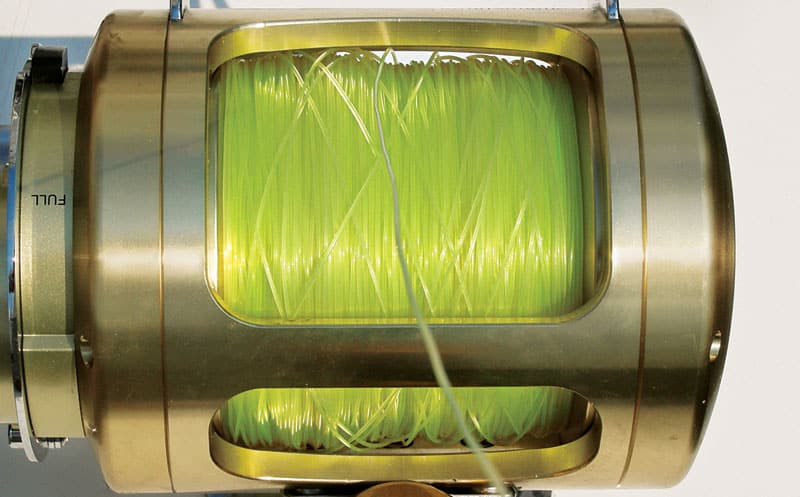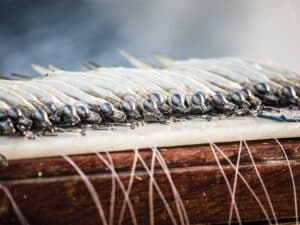
Avoiding Drag Frays
“Drag fray” is a term crews use to describe a particular type of damage that can occur when using monofilament line. There are several different causes of drag fray, but the primary culprit is poorly stacked line or loosely wound line that gets crossed and bunched up on the spool. (Everyday wear and tear when using heavy drag settings can also cause drag fray.)
Most often, line gets poorly stacked when someone reels in a bait/lure in a hurry without paying attention to how the line is wound onto the spool. If someone tries to levelwind too aggressively, the line moves across the spool too rapidly, which causes it to form X’s on the spool, or it gets bunched up at the center or on the sides. You can also inadvertently reel over a loop of loose line when a bait or lure skips in during the retrieve. That loop might throw slack in the line later on during a fight with a nice fish. The line should come onto the spool in tight, parallel rows.
Another cause of badly stacked loose line occurs after a line is let out, attached to the clip and run up the outrigger. Even with the clicker on, when the outrigger clip stops pulling line from the reel, the spool keeps turning a bit, throwing a couple of loose wraps on the spool. The actual damage to the line happens when these sections of loose line get pulled off the spool under medium to heavy drag pressure when a fish bites.
Instead of the line rolling off the spool smoothly, the line is pulled across the face of the spool, either falling off an uneven hump of line or snapping tight as loose wraps flow out under heavy pressure. When this happens, the friction and the heat from the line dragging across itself — or loose line snapping and popping tight — cause the line to fray, obviously weakening it.
To keep from stacking line poorly on your spools when retrieving a bait or lure, pinch the line tightly between your left-hand fingers a few inches in front of the spool. If the rod is in a rod holder, you can use three or four fingers and the palm of your hand to hold the line tightly, ensuring that it goes onto the spool neat, tight and even. While standing and holding the rod, just pinch the line between your thumb and forefinger. By pinching the line as it comes in, you can also constantly check for frays.
After running the line up the outrigger, pull some line from the rod tip until the line coming off the spool is tight. Now pinch the line and wind up the slack line onto the spool neat and tight.
When fighting a fish, the angler needs to pay close attention to how he stacks the line. Avoid making big X’s while levelwinding, and don’t bunch up the line in one spot — especially at the sides. A good rule of thumb while levelwinding by hand is that it should take several turns of the handle to move the line a quarter of the way across the spool.
Capt. Randy Baker
Destin, Florida







